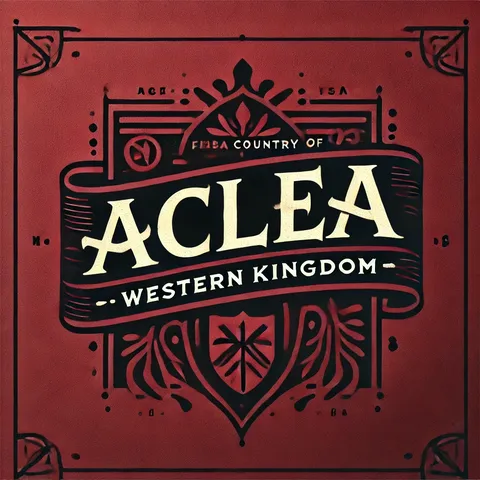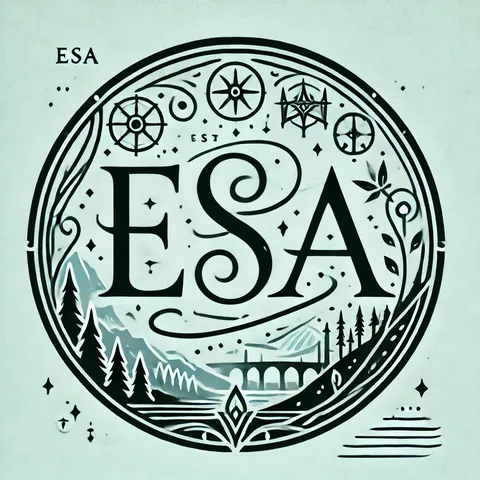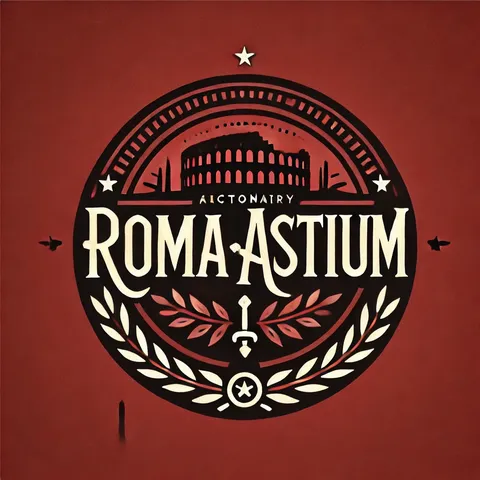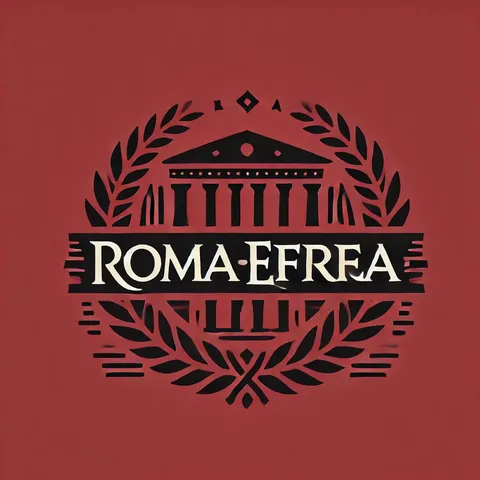Hey what's up adventurers! I'm your Dungeon Master, and I'm thrilled to introduce you to the enchanting realm of Eredonia. I have the pleasure of guiding multiple groups of daring adventurers through this extraordinary land, and I've enlisted the aid of Kanka to ensure that every nook and cranny of our adventures are meticulously recorded.
From the quirkiest characters with their intriguing backstories to the sprawling histories of kingdoms with their triumphs and tribulations. The events of history have left their mark on Eredonia, and on this page, you'll have the opportunity to delve into the historical events that have shaped the world. Explore all the maps that bring Eredonia's landscapes to life, helping you visualize the vast terrain and the locations you'll visit on your quest for glory.
So, gather your gear, sharpen your wits, and prepare for an adventure in the world of Eredonia. Enjoy!
I have used many tools like generators to build my world and I'd like to give a special thanks to those programs.
- https://www.fantasynamegenerators.com/
- https://www.kassoon.com/
- https://donjon.bin.sh/
- https://inkarnate.com/
- https://www.dndbeyond.com/
- http://dnd5e.wikidot.com/
- http://dmheroes.com/
Also, any use of copyrighted material I accidentally used and thus have no right over is purely out of admire to their work. And if your work is not legally allowed to be used, it can be easily removed from the site.
The continent of Eredonia contains a variety of regions, kingdoms, cities and characters to explore and adventure with.
The land has been ruled and dominated by one race, the Aelvari, for over 100 millennia. About eleven thousand years ago, a great Aelvari War broke out between two noble Elf families that led to the birth of many other species, such as Delverkin, Hearthkin, Gnomes and Humans. These free peoples rebelled against the ruling Borro Aelvari, causing a Favelion War, but after victory, they drove the Borro Aelvari back to the far north of Aesa. The human race has become the dominant force of the continent since then and for thousands of years.
According to scientists, the population of Eredonia consists of about 13 million humanoid races. Estimates place the different breeds as follows:
Humans: 9 to 10 million
Aelvari: 1,000,000 to 1,200,000
Delverkin, Gnomes, Hearthkin: 600,000 to 700,000
Half-Elves: 300,000 to 350,000
Orcs: 50,000 to 60,000
Goblins: 50,000 to 55,000
Half-Orcs: 45,000 to 50,000
Hobgoblins & Firbolgs: 40,000 to 45,000
Goliaths: 35,000 to 40,000
Satyrs, Tieflings, Kobolds: 30,000 to 35,000
Dray, Kenku, Lizardfolk: 25,000 to 30,000
Tabaxi & Vedalken: 23,000 to 25,000
Tritons & Yuan-Ti Purebloods: 22,000 to 23,000
Centaurs & Minotaurs & Loxodons: 20,000 to 22,000
Aarakocras, Genasi, Simic Hybrids: 15,000 to 20,000
Aasimar: 10,000 to 15,000
Regions:
Kingdoms:
Mountain-dwarfclans:
Hill-dwarfclans:
The thousand-year Aelvari War between the two noble families, Lofus and Borro, mainly took place in Qamaria where all the magical devastation has created a barren wasteland of landscapes. With the amount of life force expended to fight these wars, an energy surge erupted bringing more life from various places in the universe spreading throughout Eredonia. Borro Aelvari used magic to mix races to create dark, mindless creatures misled by hatred to destabilize other regions of Eredonia with their high numbers. These varieties include; Bugbears, Orcs, Goblins, Hobgoblins, Kobolds & Firbolgs.
Aarakocras
Many believe that Xaies, the god of divination and fate who has the appearance of a fowl, created the first Aarakocras to keep his domain running as a flying observer of the world. They resemble humanoid birds. The average specimen was about 1.5 meters long and had a wingspan of 6 meters. Halfway along the edge of each wing was a hand with three human-sized fingers and an opposable thumb. An elongated fourth finger extends the length of the wing and locks in flight. The hands cannot grip when flying, but they are almost as useful as human hands when an aarakocra was perched and its wings folded back.
Aasimar
Aasimar carry in their souls the light of heaven. They are descended from people with a touch of divine power. The first Aasimar were heroes who were praised even by the gods themselves and thus acquired their divine power. Aasimar contemporary are born to serve as champions of the gods, their births are hailed as blessed events. They are a people with otherworldly faces, with luminescent features that reveal their celestial heritage.
- Protector Aasimar
Protector Aasimar are entrusted by the forces of good to guard the weak, to attack evil wherever it arises, and to be watchful against the darkness. From a young age, a Protector Aasimar receives advice and directives that urge resistance to evil. - Scourge Aasimar
Scourge Aasimar are imbued with a divine energy that blazes intensely within them. It fuels a powerful desire to destroy evil - a desire that is, at best, unwavering and, at worst, all-consuming. - Fallen Aasimar
Fallen Aasimar have been touched by dark forces as a youth or turned to evil in early adulthood - a group of Aasimar whose inner light has been replaced by shadow.
Bugbears were a huge humanoid race distantly related to, but larger and stronger than, Goblins and Hobgoblins. Bugbears appear in the nightmare stories of many races - large, hairy beasts that creep through the shadows as silent as cats. If you walk alone in the woods, such a beast will reach out of the bushes and strangle you. Many scholars believed that bugbears and goblins were both bred by the hobgoblins as slave races, with bugbears serving as elite soldiers.
Centaurs
Centaurs are a mystery to most scholars and common people. No one knows exactly where they come from and where they are located. Sometimes you come across them in dense forests or elsewhere in the wild, but often you don't see them. Centaurs have the upper body, down to the waist, of muscular humans, with all the human variety of skin tones and features. Their ears are slightly pointed, but their faces are wider and squarer than those of Aelvari. Below the waist, they have the bodies of small horses, with a similar range of colors - from various shades of chestnut or bay to mottled or even zebra-like striped patterns. Most Centaurs style their hair and tails in a similar way.
Demigods
Demigods look like their mortal lineage, though they tend to have more ideal bodies due to their divine lineage. This can range from simple physical features such as common eye or hair color; similar face shape or voice.
Orcs
In Eredonian Orcs are called Demoni. They were created by Aelvari and served as killing machines in many wars fought. Demoni/Orc are ferocious humanoids with stooped postures, pig-like faces, and prominent tusk-like teeth. They gather into tribes that satisfy their bloodlust by killing all humanoids that come against them.
Half-Orcs
Half-Demoni/Orcs are born from alliances between Humans and Demoni/orcs made through marriages. Some Half-Demoni/Orcs become proud leaders of the Demoni/Orc tribes, and their human blood gives them an edge over their full-blooded Demoni/Orc rivals. Some venture into the world to prove their worth among men and other more civilized races. Many of them become adventurers and achieve greatness through their mighty deeds and infamous for their barbaric habits and savage rage.
Dray
Asgorath the dragon king and god, through his collaboration with Ima Aelvaran, has received a world as a gift where he has brought his dragons to life. The first dragons in the world were incredibly powerful and could disguise themselves as other races. By mating with humanoids, the Dray were born. Dray are much like dragons standing upright in humanoid form, although they have no wings or a tail. The first Dray had scales with vibrant hues that matched the colors of their dragon relatives, but generations of crossbreeding have created a more uniform appearance. Their small, fine scales are usually brass or bronze in color, sometimes ranging from scarlet, rust, gold, or verdigris. They are tall and strongly built, often standing nearly 6 feet tall and weighing 300 pounds or more. Their hands and feet are strong claw-like claws with three fingers and a thumb on each hand.
Delverkin
Due to the thousand-year magical war and the erupted energy wave, Dwarves were brought to Eredonia and quickly spread in Broga with their tunnels and mines. Tough and strong, Dwarfs are known as skilled warriors, miners, and workers of stone and metal. Although they are just over 3 feet tall, Dwarves are so broad and compact that they can weigh as much as a human that's nearly 6 feet tall. Their courage and stamina also easily match the larger Humans.
- Mountain Dwarves
Mountain Dwarves are strong and tough, accustomed to a tough life in rough terrain. You are probably on the taller side (for a dwarf) and leaning toward lighter coloring. - Hill Dwarves
Hill Dwarf have keen senses, deep intuition and remarkable resilience. They are smaller and more like Hearthkin if they were a bit tougher.
Aelvari
Elves have unearthly grace and delicate features and are hauntingly beautiful to humans and members of many other races. They are on average the same height as Humans. They are slimmer than Humans and weigh only 40 to 60 kg. They are blessed with a long life often spanning a millennium of years of life. The oldest elves could live even older than 3000 years.
- Borro Aelvari
Borro Elves have a sharp mind. They are haughty and withdrawn, believing themselves superior to non-Elves and even other Elves. - Lofus Aelvari
Lofus Elves have keen senses and intuition, and with nimble feet they fly swiftly and stealthily through the native forests. They are often friendlier and common with Humans and other races.
Half-Elves
Half-Elves walk in two worlds but actually belong to neither, Half-Elves combine what some say are the best qualities of their Elf and Human parents: Human curiosity, inventiveness and ambition tempered by the refined senses, love of the nature and artistic taste of the Elves. Some Half-Elves live among Men, distinguished by their emotional and physical differences, watching friends and loved ones age while time barely touches them. Others live with the Elves and grow restless as they mature in the timeless Elves realms, while their peers continue to live as children.
Quarter-Elves
Quarter-Elves are more Human than Elf, yet the creatures of this race are an intriguing bunch. They look and behave like Humans, but their bodies age less quickly. While the average Human lives to be 80 years old, Quarter-Elves can live up to 200 years.
Firbolgs
Firbolgs resembled humans and the males had great, thick beards. Their thick, tough skin was fleshy pink, and their hair, though it came in many colors, was usually red or blond and worn long. A firbolg's voice was deep and soft, and they had a tendency to roll their consonants when they spoke. Firbolg tribes monsoon in remote forest strongholds, preferring to spend their days in quiet harmony with the forest. When provoked, Firbolgs demonstrate formidable skills with weapons and druidic magic.
Genasi
Genasi were plane-affected Humans, imbued with the power of the elements. Technically, the Genasi were not a race, but rather a general classification of Humans with a heritage (usually unknown) that included some planar being from one of the elemental realms.
- Earth Genasi
Earth Genasi often have bits of cloth falling off their bodies and mud sticking to their clothes and they never get clean no matter how many times they bathe. Others are as shiny and polished as gemstones, with skin tones of deep brown or black, eyes sparkling like agate. Earth Genasi can also have smooth metallic flesh, a dull iron skin with rust spots, a coarse-grained and rough skin, or even a layer of small embedded crystals. The coarsest have cracks in their flesh, from which faint light shines. - Air Genasi
Air Genasi usually have light blue skin, hair and eyes. A faint but steady breeze accompanies them, stirring through the hair and clothing. Some Air Genasi speak in hoarse voices, characterized by a weak echo. A few show strange patterns in their flesh or grow crystals from their scalps. - Fire Genasi
Fire Genasi are feverishly hot as if burning inside, an impression enhanced by flaming red, coal black or ash gray skin tones. The more Human-looking ones have fiery red hair that squirms under extreme emotion, while the more exotic ones have real flames dancing on their heads. Fire Genasi voices can sound like crackling flames, and their eyes flicker when angry. Some are accompanied by the faint smell of sulfur. - Water Genasi
Water Genasi look like they have just finished bathing, with drops of moisture on their skin and hair. They smell of fresh rain and clean water. Blue or green skin is common, and most have somewhat oversized eyes, blue-black in color. A Water Genasi's hair can float, wave and sway freely as if it were underwater. Some have voices with undertones reminiscent of whale songs or babbling brooks.
Gnomes
It seems as if the Gnomes have crawled out of their holes from one moment to the next as if they were always there. No one knows exactly how they got here, but they are welcomed almost everywhere. Gnomes were very small compared to most other breeds and, with an average height varying between 1 and 1.2 meters and a weight range of 18 to 20kg, gnomes were generally slightly shorter and lighter than Hearthkin. Gnomes enjoy life and enjoy every moment of invention, exploration, research, creation and play. A Gnome's energy and enthusiasm for life shines through every inch of his or her tiny body.
Goblins
Goblins were a race of small and numerous goblinoids found throughout Eredonia, often in underground surface caves known as holes. The race was often, but not always, dominated by other goblins, usually Hobgoblins. Goblins were originally created by this related race to serve as scouts and infiltrators.
Goliaths
Goliaths wander through a gloomy realm of sand, dunes, rocks, wind, heat and cold all at once. Their bodies look like they are carved from mountain stone and give them great physical strength. Their spirits follow the wandering wind, making them nomads who wander from peak to peak. Their hearts are imbued with the cold esteem of their cold realm, Qamaria, the Midpass, giving each Goliath the responsibility of earning a place in the tribe or die trying.
Hearthkin
Halflings survive in a world full of larger beings by avoiding notice or, for that matter, avoiding offense. They are just over 3 feet tall and seem relatively harmless, thus managing to survive for centuries in the shadow of empires and on the brink of wars and political strife. They tend to be sturdy and weigh between 30 and 50 pounds.
Celestials
Celestials are beings of great power that controlled some aspect of mortal singularities. Worshipers were necessary for the survival of a Heavenly Dweller and the powers. The number and zeal of the worshipers largely determined the power of the Celestials. If the popularity was waning or there are no suitors, the power fades and in extreme cases they can die of neglect. When these gods from the celestial pantheon and beyond cross with mortals, you get Demigods.
Hobgoblins
Borro Aelvari used magic to mix races to create dark, mindless creatures misled by hatred to destabilize other regions of Eredonia with their high numbers. The first of these were Hobgoblins. Hobgoblins are large goblinoids with dark orange or red-orange skin. A Hobgoblin measures virtue by physical strength and martial prowess, caring for nothing but skill and cunning in battle. War is the lifeblood of Hobgoblins. His glory are the dreams that inspire them. Its horrors do not appear in their nightmares.
Kenku
The fallen fowl that Xaies brought to the world. Kenku were a race of flying bird humanoids. They tended to be selfish and secretive in nature and often engaged in plots to gain wealth and power. They operated in small gangs and often lived in large human cities where they worked as spies, assassins or thieves.
Kobolds
Kobolds were aggressive, inward, but industrious little humanoid creatures. They were known for their skill in building traps and preparing for ambushes and mining. Distantly related to dragons, they were often found as their minions, having been created by the elves.
Goblins
Goblins were aggressive, inward, but industrious little humanoid creatures. They were known for their skill in building traps and preparing for ambushes and mining. Distantly related to dragons, they were often found as their minions, having been created by the Aelvari.
Lizardfolk
Lizardfolk, despite their physical form, have more in common with iguanas or dragons than with Humans, Delverkin or Aelvari. Lizardfolk have a strange and inscrutable mentality, their desires and thoughts are driven by a different set of basic principles than those of warm-blooded creatures. Their bleak swamp dwellings may be hundreds of miles from the nearest Human settlement, but the gulf between their way of thinking and that of the smooth skin is much wider.
Loxodons
Loxodons are humanoid elephants. They are not originally from Eredonia, but brought with them wisdom that shaped the world. They hum or sing in sonorous tones and move slowly or sit completely still. When provoked into action, Loxodons are true terrors - roaring with rage, trumpeting and flapping their ears. Their serene wisdom, fierce loyalty and unwavering conviction are huge assets to their guilds.
Humans
Humans are the most adaptable and ambitious creatures among the common races. They have very different tastes, morals and customs in the many different countries where they have settled. But when they settle, they stay: they build cities that last for centuries and great kingdoms that can last for centuries. An individual Human may have a relatively short lifespan (~80 years), but a Human nation or culture preserves traditions with origins far beyond the reach of a single Human memory. They live fully in the present - making them well suited to the adventurous life - but also plan for the future and strive to leave a lasting legacy. Individually and as a group, Humans are flexible opportunists and remain alert to changing political and social dynamics.
Minotaurs
Minotaurs are humanoids with a barrel on their chests with heads similar to those of bulls. Minotaurs are resurrected by Nariël's lightning when a common bull is struck by its savage bolts. Their horns range in size from about 8 inches long to large, curling arms easily three times that length. They often decorate their horns with metal rings or encase them in metal to protect them from damage.
Pegataurs
Pegataurs, as their name suggests, are Centaurs-like creatures consisting of an elven upper body that replaces the head and neck of a winged horse. Many commonly believe they are the result of a wizard linking a pegasus to an Elf, while others, typically members of the elvish families, insist they must be the creation of an unknown immortal.
Satyrs
Like Centaurs, Satyrs are a mystery to most scholars and common people. No one knows exactly where they come from and where they are located. Sometimes you come across them in dense forests or elsewhere in the wild, but often you don't see them. Satyrs resemble Humans with hairy lower bodies and cloven hooves similar to those of goats. Satyrs have pointed ears that resemble an Elf, and horns that range from small stubs about two inches long to large and curly ram's horns that protrude about a foot from their heads. Their hair ranges from the most common brown to shades of reddish orange and the rare white. They usually have a bushy beard, or at least a goatee. The eyes of Satyrs are usually blue or brown, but some satyrs have yellow eyes that resemble those of a goat. They are relatively short, about 1.50m - 1.60m.
Simic Hybrids
Simic Hybrids use magic to fuse different life forms together. In recent years, they have expanded this research to humanoid subjects, magically transferring the traits of various animals to Humans, Aelvari, and Vedalken. The goal of the project is to build an army of soldiers perfectly adapted to different combat situations. These hyper-evolved specimens are called Simic Hybrids, although they sometimes refer to themselves as Guardians.
Tabaxi
Tabaxi come from a strange and distant land, they are wandering feline humanoids driven by curiosity to collect interesting artifacts, collect stories and stories and see all the wonders of the world. Ultimate travelers, the curious tabaxi rarely stay in one place for long. Their innate nature forces them not to uncover secrets and not to let treasures or legends go to waste.
Tieflings
Tieflings are the product of fallen celestials and mating with mortals. They are derived from Human bloodlines and in the broadest possible sense still look Human. However, their infernal heritage has left a distinct imprint on their appearance. Tieflings have large horns that take on different shapes: some have curly horns like a ram's, others have straight and long horns like those of a gazelle, and some spiral up like the horns of an antelope. They have thick tails, four to five feet long, that lash or wrap around their legs when they get upset or nervous. Their fangs are sharply pointed and their eyes are solid in color - black, red, white, silver or gold - with no visible sclera or pupil. Their skin tones cover the full range of Human coloring, but also include various shades of red. Their hair, which falls down from behind their horns, is usually dark, ranging from black or brown to dark red, blue or purple.
Tritons
Tritons were an outsider race native to the seas. They have blue or silver-blue skin and deep blue or blue-green hair. They usually have fins and crests along their arms, legs, and sometimes their heads. They are usually dressed in light clothing or armor made for easy movement through oceanic materials.
Vedalken
Vedalken are tall and slender, standing nearly a head taller than Humans on average, but weigh about the same. Their hairless skin comes in various shades of blue. Their eyes are darker shades of blue or violet. They lack external ears, their noses are broad and flat, and they are partially amphibious.
Yuan-Ti Purebloods
Yuan-Ti Purebloods are serpent creatures left over from an ancient, decadent Human Kingdom. Centuries ago, their dark gods taught them profane, cannibalistic rituals to mix their flesh with that of serpents, spawning a society of hybrids in which the most serpentine are the leaders and the most human are spies and agents in foreign lands.
Campaigns
In 2980 ADM, in the realm of Eredonia, the Noble Warriors, a band of adventurers, embark on a thrilling journey to recover the treasures of fallen heroes, guarded by a mysterious being. Along the way, they confront the deceptive wizard Char-Iz, face perilous trials, and navigate a web of manipulation, turning it in an adventure that holds the fate of the world in the balance.
In the large city of Khar Benidir, adventurers are summoned to the Whispering Wind Tavern. They meet a mysterious figure who tasks them with recovering the stolen Sands of Time, a magical artifact of great power, taken by the thieves guild, Coins & Cloaks. Promising rewards and hinting at hidden dangers, this quest sets the adventurers on a path that intertwines with Eredonia's ancient mysteries and magical history.
This campaign begins in the year 1632 ADM, as players are hired by Therald, the Lord of Favelion (Athil), to recover a stolen heirloom. Embarking on this quest will set them on a collision course with a complicated power struggle. The adventurers have to navigate through the shifting alliances and their decisions will not only solve high-stake betrayals but also determine which faction will ascend to power.
This campaign takes the players on a thrilling high-seas adventure in the Arafora Sea north of Eredonia to uncover the secrets of a hidden, enchanted land. They’ll have to join forces with infamous pirates to piece together an ancient map, face challenging encounters, and forge critical alliances.
This campaign begins with solitary adventures in search of a common purpose that leads to mysteries of great magnitude. They embark on a quest for a great treasure, but they encounter mysterious events along the way.
A great treasure, a great monster and a group of brave adventurers on a journey to heroism and riches. What can go wrong?
The group consists of Ara Eliadon, Joho Hoekhand, Minkyr, Jingo Smikstee en Diango Piliu.
Area
Map
Dominant Race: Humans
Government: Monarchy led by a king descended from one of the Seven Lords
Population: 1,250,084
Geography: Aclea, home to the Western Kingdom, is a coastal region with numerous towns and villages. The largest city is Redhaven, and other significant settlements include Deershore, Lastshore, and Hollowbay. The landscape is dotted with fortified castles, with Redkeep Fortress being a significant landmark. The kingdom of Aclea covers an area of 388 thousand square kilometers. Of this, 24% (93 thousand square kilometers) is arable land and 75% (291 thousand square kilometers) is wilderness.
Culture and Society:
The Western Kingdom is ruled by a king who is a direct descendant of one of the legendary Seven Lords, cementing his claim as the righteous king of the realm. Aclea has a strict social hierarchy with the king and nobility at the top. Nobles manage large estates and enforce the king's laws, while commoners engage in agriculture, fishing, and trades. Aclean society is conservative and traditional, with a strong emphasis on loyalty to the king and maintaining family honor. Social mobility is rare, and one's birth largely determines their social status. The Western Kingdom is renowned for its military strength, particularly the elite group known as the Red Knights. These soldiers undergo rigorous training and are prepared for any combat situation. They are a symbol of the kingdom's martial prowess and serve as the king's personal guard. Beyond the Red Knights, the Western Army is well-organized and disciplined, with a reputation for being formidable on the battlefield. Military training begins at a young age, especially for the nobility.
Economy: Aclea's economy is primarily agrarian, with fishing as a secondary occupation due to its coastal geography. Trade with other regions is limited, fostering a self-sustaining economy that focuses on local resources.
Language: Acleans speak Common Eredonian, with a local dialect.
Religion and Spirituality:
- Polytheistic Beliefs: Acleans worship a pantheon of gods associated with nature, war, and agriculture.
- Religious Influence: The church plays a significant role in guiding moral conduct and community practices. Temples and shrines are central to community life.
- Rituals: Regular rituals and offerings to the gods are common, especially during festivals and times of need.
Daily Life:
- Work and Leisure: Daily life revolves around work in agriculture, fishing, and crafts. Leisure time is spent with family and community activities.
- Education: Education is limited to the nobility and religious orders. Commoners learn trades through apprenticeships.
- Cuisine: Aclean cuisine is hearty, featuring grains, fish, vegetables, and game. Communal meals reinforce family and community bonds.
Notable Locations:
The largest city, Redhaven has 96 thousand inhabitants. There are 3 towns. The rest of the population lives in numerous small villages, hamlets, isolated dwellings, etc.
Towns:
Fortress:
Dominant Races: Diverse races
Government: Divided into three areas governed by warlords
Population: 308,385
Geography:
Ascurg is located in the southeast of Eredonia, just below Roma Efrea. It is characterized by extensive wetlands with numerous small islands. The inhabitants, often a mix of humans and residents from Roma Efrea, are generally short, stocky, and muscular, with dark skin, dark eyes, and thick black hair. Ascurg stands out as the only region in Eredonia where humans are outnumbered by other races such as Lizardfolk, Tabaxi, Tritons, Vedalken, and Yuan-Ti Purebloods. The region spans 781 thousand square kilometers, with 19% (148 thousand square kilometers) arable land and 81% (632 thousand square kilometers) consisting of swamp-like wilderness.
Culture and Society:
Ascurg lacks a centralized government and is divided into three areas, each ruled by a warlord. These areas are Velar in the west, Voden in the middle, and Verdan in the east. The society is a blend of various races, each contributing to a rich and diverse cultural tapestry. Ascurgens are known for their resilience, adaptability, and strong community bonds. Despite the lack of central authority, the warlords maintain order through strength and alliances. The population engages in fishing, hunting, and foraging, utilizing the abundant natural resources of the wetlands. The region is renowned for its skilled warriors and hunters, often employing unconventional tactics and knowledge of the swamps to their advantage.
Economy:
Ascurg's economy is primarily based on fishing, foraging, and small-scale farming. Trade with nearby regions includes unique goods such as rare herbs, exotic animals, and swamp resources.
Language:
Ascurgens speak a blend of Common Eredonian and dialects influenced by their diverse racial makeup.
Religion and Spirituality:
- Animistic Beliefs: Ascurgens worship a variety of spirits and deities associated with nature, water, and survival.
- Religious Influence: Shamanistic leaders play a crucial role in guiding spiritual and communal practices. Sacred groves and ancient trees are central to their worship.
- Rituals: Rituals and ceremonies often involve offerings to nature spirits, seeking protection and blessings for their communities.
Daily Life:
- Work and Leisure: Daily life revolves around subsistence activities such as fishing, hunting, and gathering. Leisure time is spent in communal gatherings, storytelling, and music.
- Education: Education is informal, with knowledge passed down through generations and apprenticeships.
- Cuisine: Ascurgen cuisine is hearty and resourceful, featuring fish, wild game, and locally foraged plants. Communal meals are important for maintaining social cohesion.
Notable Locations:
The largest city, Wrathmire, has 22,343 inhabitants. There are 3 other cities, with the rest of the population living in numerous villages, hamlets, and isolated dwellings.
Cities:
Names:
Male: Borivik, Faurgar, Jandar, Kanithar, Madislak, Ralmevik, Shaumar, Vladislak
Female: Fyevarra, Hulmarra, Immith, Imzel, Navarra, Shevarra, Tammith, Yuldra
Surnames: Chergoba, Dyernina, Iltazyara, Murnyethara, Stayanoga, Ulmokina
Dominant Races: All Races (Humans, Aelvari, Delverkin, Hearthkin, etc.)
Government: Governed by noble houses; three large and powerful houses with many vassal houses
Population: 2,670,515
Geography:
Athil is situated in the middle of Eredonia, just above Gaiza, and boasts the most varied population of any region. The humans here are typically tall and muscular, with dark mahogany skin, curly black hair, and dark eyes. Athil spans an area of 870,236 square kilometers, with 31% (269 thousand square kilometers) being arable land and 68% (591 thousand square kilometers) wilderness. The landscape mirrors that of Gaiza, featuring two large forests: Rosewood in the north, which ends at the mountains of Broga, and the Delan Woods in the east.
Culture and Society:
Athil has no centralized government since the death of its last king in 1632 ADM. The region is now divided among different noble houses, with three large and powerful houses—House Ferena in the west, House Maul in the center, and House Greyfire in the east—governing most of Athil. These houses have many lesser noble houses as their vassals. Athilian society is diverse and dynamic, with each noble house maintaining its own customs and traditions while contributing to the broader cultural mosaic of the region. The noble houses wield significant influence and power, engaging in alliances, rivalries, and political maneuvering to maintain their status. The region is known for its robust warriors, skilled artisans, and rich cultural heritage.
Economy:
Athil’s economy is a blend of agriculture, forestry, and trade. The fertile lands and abundant natural resources support a thriving agrarian sector, while trade routes facilitate commerce with neighboring regions.
Language:
Athilians speak Common Eredonian, enriched with regional dialects influenced by the various races that inhabit the area.
Religion and Spirituality:
- Polytheistic Beliefs: Athilians worship a diverse pantheon of gods representing various aspects of life and nature.
- Religious Influence: Temples and shrines are integral to community life, with priests and priestesses guiding spiritual and moral conduct.
- Rituals: Festivals, ceremonies, and seasonal celebrations are common, honoring the gods and fostering community spirit.
Daily Life:
- Work and Leisure: Daily life involves farming, crafting, and trade. Leisure activities include festivals, communal gatherings, and artistic pursuits.
- Education: Education is accessible to all, with public institutions and mentorship programs ensuring knowledge transfer.
- Cuisine: Athilian cuisine is diverse, featuring grains, vegetables, meats, and forest foraged ingredients. Communal meals are central to social cohesion.
Notable Locations:
The largest city, Yvanore, has 15,972 inhabitants. Middale, the second largest, has 14,161 inhabitants. There are a total of 6 cities, with the rest of the population living in numerous villages and isolated dwellings.
Towns:
• Fayhold
• Dirtreach
• Yvanore
• Eldar
• Middale
• Stormhill
Names:
Male: Anton, Diero, Marcon, Pieron, Rimardo, Romero, Salazar, Umbero
Female: Balama, Dona, Faila, Jalana, Luisa, Marta, Quara, Selise, Vonda
Surnames: Agosto, Astorio, Calabra, Domine, Falone, Marivaldi, Pisacar, Ramondo
Dominant Races: Delverkin, Humans (Other races in towns and villages)
Government: Governed by various Dwarven clans and local town councils
Population: 726,355
Geography:
Broga is located in the far north of Eredonia, featuring several vast mountain ranges that serve as the homeland of the dwarven clans. The central feature of this region is the towering Ravenbeards Mountain, which overlooks Lofus Lake. The high mountains are primarily inhabited by dwarves, while the towns and villages along the northern coasts house a mix of races. The southern hills are the domain of the hill dwarf clans. Brogan humans are of medium height and build, with skin tones ranging from light to brown, brown or black hair, and a wide variety of eye colors, though brown is most common. Broga spans an area of 672 thousand square kilometers, with 16% (107 thousand square kilometers) arable land and 84% (564 thousand square kilometers) wilderness.
Culture and Society:
Broga is a region where the rugged terrain and the resilient spirit of its inhabitants shape daily life. The dwarven clans play a central role in governance and culture, with each clan maintaining its own traditions and territories. These clans include the Ravenbeards, Bannerfists, Honorbeards, Heavyminers, Forgebreakers, Kragjaw, Copperstone, and Grimblade. Broga’s society values strength, craftsmanship, and loyalty, with a strong sense of community among both mountain and hill dwarves. The humans and other races living in Broga’s towns and villages contribute to a diverse and cooperative culture. The region is known for its masterful blacksmiths, miners, and warriors, with dwarven craftsmanship being particularly renowned.
Economy:
Broga’s economy is based on mining, metalworking, and trade. The rich mineral resources of the mountains provide valuable raw materials, while skilled artisans produce high-quality goods that are traded with other regions.
Language:
Brogan inhabitants speak Common Eredonian and Dwarvish, with various dialects reflecting the region’s diverse population.
Religion and Spirituality:
- Polytheistic Beliefs: Brogans worship a pantheon of gods associated with the earth, craftsmanship, and war.
- Religious Influence: Temples and shrines dedicated to these deities are central to community life, with priests and shamans guiding spiritual practices.
- Rituals: Seasonal festivals, forging ceremonies, and ancestor worship are integral to Brogan culture.
Daily Life:
- Work and Leisure: Daily life involves mining, metalworking, and farming in arable areas. Leisure activities include feasts, storytelling, and competitive games.
- Education: Education is typically provided through apprenticeships and clan-based training.
- Cuisine: Brogan cuisine is hearty, featuring meat, root vegetables, and sturdy grains. Communal meals are common, often accompanied by ale and spirited conversation.
Notable Locations:
The largest town, Boldor, has 22,236 inhabitants. There are 3 towns in total, with the rest of the population living in numerous small villages, hamlets, and isolated dwellings.
Towns:
• Ginum
• Norm Ulihm
• Boldor
Dwarven Clans:
• Ravenbeards
• Bannerfists
• Honorbeards
• Heavyminers
• Forgebreakers
• Kragjaw
• Copperstone
• Grimblade
Names:
Male: Bor, Fodel, Glar, Grigor, Igan, Ivor, Kosef, Mival, Orel, Pavel, Sergor
Female: Alethra, Kara, Katernin, Mara, Natali, Olma, Tana, Zora
Surnames: Bersk, Chernin, Dotsk, Kulenov, Marsk, Nemetsk, Shemov, Starag
Dominant Races: Orcs, Goblins, Hobgoblins, Humans, and various other races.
Government: Ruled by chieftains
Population: 172,182
Geography:
Demoña is a large island located southwest of Eredonia, shaped by ancient volcanic eruptions. The landscape is marked by lava flows, strange stone pillars, and rock formations sculpted by the wind into natural sculptures. The terrain is unforgiving, with dramatic temperature changes. Few outsiders venture into Demoña, and even fewer stay long enough to explore. It is believed to be a cold and harsh wasteland filled with ferocious monsters, earning its reputation as an evil land shunned by even the bravest adventurers. Once the home of Varloc Clade, one of the seven lords banished from the mainland, Demoña became a refuge for dark creatures exiled from Eredonia. The island covers an area of 401 thousand square kilometers, with only 2% (8 thousand square kilometers) arable land and 98% (393 thousand square kilometers) wilderness.
Culture and Society:
Demoña's society is a mix of dark creatures and other races, living under the remnants of Varloc Clade's rule. The island is governed by local chieftains and followers of Varloc Clade who enforce a harsh and unforgiving rule. The inhabitants have adapted to the island's brutal conditions, developing a culture centered around survival and strength. Outsiders are rarely welcomed, and the population is wary of strangers. The society is structured around fortresses and small settlements, with a focus on defense and self-sufficiency.
Notable Locations:
Demoña's population is spread across several fortresses and small towns, with many living in small villages and isolated dwellings.
Fortresses:
Towns:
Names:
Male: Agron, Balthar, Draegor, Gorn, Karnek, Morkar, Nazgul, Tharok
Female: Briza, Elara, Jorra, Karra, Morga, Sarya, Thalia, Zeryn
Surnames: Blackthorn, Darkmist, Nightshade, Shadowflame, Stormrider, Vargoth, Wraithcaller
Dominant Races: Aelvari, Humans, and other races
Government: Borro Kingdom, ruled by an ancient elven monarchy
Population: 571,687
Geography:
Aesa is located in the northwest of Eredonia, just above Aclea. It is the homeland of the elven Borro Kingdom, a realm that has thrived for millennia. The region is dominated by the dense forests of the Borrorain Forest, where most of the elven population resides in seclusion. There are also villages where humans, known as Aesiars, and other races live. Aesiars are typically tall with light skin and blue or steel gray eyes. Most have raven black hair, though those in the far north often have blond, red, or light brown hair. Aesa covers an area of 312,419 square kilometers, with 27% (84 thousand square kilometers) arable land and 72% (224 thousand square kilometers) wilderness.
Culture and Society:
The Borro Kingdom is an ancient and mystical realm, ruled by a longstanding elven monarchy. The elves of Aesa are known for their wisdom, magic, and deep connection to nature. Their society is highly structured, with a strong emphasis on tradition, art, and the natural world. Elves live in harmony with their environment, using their magic to sustain the forests and maintain balance. The human and other non-elven inhabitants of Aesa have adapted to the elven way of life, contributing to a diverse and harmonious society. The capital city, Cloakfell, is a majestic elven city hidden deep within the northern forests, home to over 200 thousand elves. The region is known for its exquisite craftsmanship, magical artifacts, and ethereal beauty.
Economy:
Aesa's economy is based on sustainable forestry, agriculture, and the crafting of magical and artistic goods. The arable land supports farming, while the forests provide resources for elven artisans.
Language:
The inhabitants of Aesa speak Elvish, with humans and other races often fluent in both Elvish and Common Eredonian.
Religion and Spirituality:
- Polytheistic Beliefs: The elves of Aesa worship a pantheon of nature deities, with a strong focus on forest and earth spirits.
- Religious Influence: Temples and sacred groves are integral to community life, with druids and priests guiding spiritual practices.
- Rituals: Seasonal festivals, moonlit ceremonies, and rites of passage are common, celebrating the cycles of nature and the continuity of life.
Daily Life:
- Work and Leisure: Daily life involves tending to the forests, farming, and crafting. Leisure activities include music, dance, storytelling, and communal gatherings.
- Education: Education is highly valued, with a focus on both practical skills and the preservation of elven lore and magic.
- Cuisine: Aesian cuisine features fruits, vegetables, and game from the forests, with meals often prepared with magical herbs and spices. Communal feasts are central to social and religious events.
Notable Locations:
The capital city, Cloakfell, has over 200 thousand inhabitants. The largest town, Aloran, has a population of 26,734, and the second largest, Irmelon, has 21,234 inhabitants. There are 2 towns in total, with the rest of the population living in numerous small villages, hamlets, and isolated dwellings.
Cities:
Towns:
Names:
Male: Ander, Blath, Bran, Frath, Geth, Lander, Luth, Malcer, Stor, Taman, Urth
Female: Amafrey, Betha, Cefrey, Kethra, Mara, Olga, Silifrey, Westra
Surnames: Brightwood, Helder, Hornraven, Lackman, Stormwind, Windrivver
Dominant Race: Humans
Government: Eastern Kingdom led by a King and it's council
Population: 4,432,034
Geography:
Gaiza, ruled by the Eastern Kingdom, is centrally located and embraces all races, though it is predominantly human. Gaizans are typically slender with tawny skin and brown hair varying from nearly blond to almost black. Most are tall with green or brown eyes, though these features are not universal. The region spans 1,163,204 square kilometers, with 27% (314 thousand square kilometers) arable land and 72% (838 thousand square kilometers) wilderness.
Culture and Society:
The Eastern Kingdom is a diverse and inclusive realm, where the king oversees a land of rich cultural heritage. Gaizan society values strength, unity, and wisdom, with a balanced approach to governance and community life. Despite the diversity, humans hold a dominant position in social and political spheres. The kingdom is renowned for its skilled artisans, knowledgeable scholars, and formidable warriors. Social mobility is achievable through merit, with many rising to prominence through exceptional talent or service. The elite guardians of the realm are known as the King's Shield, an esteemed order dedicated to protecting the king and maintaining peace. The Eastern Army serves as the primary military force, well-trained and disciplined, known for their strategic prowess in both defense and conquest.
Economy:
Gaiza's economy is a blend of agriculture, trade, and craftsmanship. Fertile lands and abundant resources support a thriving agrarian sector, while trade routes facilitate commerce with neighboring regions.
Language:
Gaizans speak Common Eredonian, enriched with dialects influenced by various races.
Religion and Spirituality:
- Polytheistic Beliefs: Gaizans worship a pantheon of gods symbolizing various aspects of life and nature.
- Religious Influence: Temples and shrines are integral to community life, with priests and priestesses guiding spiritual and moral conduct.
- Rituals: Seasonal festivals, harvest celebrations, and ceremonies to honor deities are deeply embedded in Gaizan culture.
Daily Life:
- Work and Leisure: Daily life revolves around farming, trade, and artisanal crafts. Leisure activities include communal gatherings, storytelling, and music.
- Education: Education is accessible to all, with public institutions and mentorship programs ensuring knowledge transfer.
- Cuisine: Gaizan cuisine is diverse, featuring grains, vegetables, meats, and seafood. Communal meals are central to fostering community bonds.
Notable Locations:
The capital city, Easthold, has 214 thousand inhabitants. Reachville, the second largest city, has 71 thousand inhabitants. The region includes 1 more major city and 8 smaller cities. The rest of the population lives in numerous villages, hamlets, and isolated dwellings.
Major cities:
Cities:
Gaizan Names:
Male: Darvin, Dorn, Evendur, Gorstag, Grim, Helm, Malark, Morn, Randal, Stedd
Female: Arveene, Esvele, Jhessail, Kerri, Lureene, Miri, Rowan, Shandri, Tessele
Surnames: Amblecrown, Buckman, Dundragon, Evenwood, Greycastle, Tallstag
Dominant Race: Humans
Government: Roman Empire
Population: 1,900,824
Geography: Roma Astium, occupying much of the historic territory known as Allora, stretches across 881,232 square kilometers. This vast land includes 625,000 square kilometers of arable land (71%) and 255,000 square kilometers of wilderness (29%). The capital, Castra Norba, is a city of 187,000 residents and serves as the administrative and cultural heart of the region. The empire’s control extends over other cities, such as Quenora, Callonia, Valenium, Myrandium, Tripolis, and Tusculum, as well as two fortresses, though these serve primarily as remnants of past glory rather than active defense.
Culture and Society:
Roma Astium’s current society reflects its conquest and transformation under Roman rule, particularly following the decline of the once-flourishing Alloran civilization. The region once hailed as the center of Eredonia’s greatest empire has become more insular under Roman influence. The Roman Empire instills a strict hierarchical society, favoring humans and suppressing cultural diversity. The few non-human residents have faced widespread discrimination, driving migrations that have changed the demographic makeup of greater Eredonia. Local nobility under Roman authority govern according to imperial law, with a strong emphasis on discipline, order, and adherence to Roman customs. Some remnants of the ancient Alloran ways linger, but they are often kept hidden or preserved by isolated communities outside the gaze of the empire.
Economy: Roma Astium’s economy centers on agriculture, taking full advantage of the extensive arable land to sustain both local populations and the Roman elite. Trade exists but is highly controlled, benefiting Roman officials and merchants who manage the flow of resources and wealth. Self-sufficiency is emphasized, especially in rural communities.
Language: Latin is the official language under Roman rule, though traces of Old Alloran dialects survive among rural populations and small villages.
Religion and Spirituality:
- Polytheistic Beliefs: Romans enforce the worship of their pantheon, particularly gods associated with war, strength, and conquest.
- Religious Influence: Temples to Roman gods are built in every town, though the influence of Alloran deities is still observed discreetly by some. Religious authorities align closely with Roman governance, enforcing laws and guiding morality through imperial religious teachings.
- Rituals: Rituals honoring Roman gods are held publicly, often in grand ceremonies that double as state propaganda. Secret rites honoring ancient Alloran gods occur in secluded places.
Daily Life:
- Work and Leisure: Life for commoners revolves around agriculture, construction, and service in Roman households or public works. Leisure time is limited and primarily spent in communal gatherings or small-scale festivals.
- Education: Education is reserved for Roman elites, with literacy among commoners generally low. Dwarf clans and other isolated groups pass down trades through apprenticeships.
- Cuisine: Local cuisine is heavily influenced by traditional Alloran dishes, featuring grains, vegetables, and seasonal fruits. Roman cuisine, with its emphasis on rich, spiced dishes, is increasingly prominent in larger towns and among the upper classes.
Notable Locations:
The capital city, Castra Norba, has 187,000 inhabitants and remains the most significant city. Dwarven clans, such as the Bonecloak and Greybrows, reside in the nothern hills and mountains, largely withdrawn from public life.
Cities:
Roman Astium Names:
Masculine: Lyco, Antipho, Telestis, Alcesimus, Pseudolus, Cylindrus, Tedusius, Lycus
Feminine: Pinaria, Opsia, Duronia, Mucia, Helvetia, Vipsania, Antia
Surnames: Lupercus, Audens, Cotta, Vitus, Sejanus, Sylvius, Gelasius, Quintillius
The area that included both Roma Astium and Roma Efrea was originally called Allora. It was once the center of the greatest civilization in the world and its influence stretched far and wide. The capital was Castra Norba and from this point the High King of the Free Peoples, Alian Lofus, ruled over Eredonia.
Since the death of Alian Lofus and the departure of his bloodline, the power of the city and the empire surrounding it has weakened dramatically. The majority of the population left the area. Until in 2978 ADM the Romeins Keizerrijk took over the country and centralized their power in Castra Norba. Races other than Humans were detested and unwelcome, leading to the great westward migration that greatly increased the diversity of society in the rest of Eredonia.
It turns out that the people living in Roma Efrea actually welcome the different races more than the inhabitants of Roma Astium, which is what separates the two regions.
Roma Efrea covers an area of 1,045,268 square kilometers. Of this, 76% (794 thousand square kilometers) is arable land and 24% (250 thousand square kilometers) is wilderness.
Roma Efrea has a total population of 509,158.
The largest city, Cartenna has a population of 4,492 thousand. There are 5 small towns. The rest of the population lives in numerous small villages, hamlets, isolated dwellings, etc.
Roma Efrea has 16 active castles and 6 ruins. In the civilized parts of the country there are 15 active and 0 destroyed castles and in the wild there are 1 active and 6 destroyed castles.
Towns:
Efrea Romani use the same names as Roma Astium.
Qamaria is a desert of sand, stretching out in vast dunes and rounded hills. Centuries-old dead trees dot the hills and dunes. The few water puddles present are too salty to drink. It remains constantly warm, and rainfall is scarce.
Qamaria covers an area of 1,152,896 square kilometers. Of this, 9% (103 thousand square kilometers) is arable land, and 91% (1.049 million square kilometers) is wilderness.
The total population of Qamaria is 322,228.
The largest city, Khar Benidir, has 44 thousand residents, and the second-largest, Adarq, has 6,275. There is one major city and seven small towns. The remaining population resides in numerous small villages, hamlets, isolated dwellings, etc.
Qamaria has 128 active castles and 41 ruins. In the civilized parts of the country, there are 7 active and 7 ruined castles, while in the wilderness, there are 121 active and 34 ruined castles.
Cities:
Towns:
Qamarian names:
(male) Aoth, Bareris, Ehput-Ki, Kethoth, Mumed, Ramas, So-Kehur, Thazar-De, Urhur;
(female) Arizima, Chathi, Nephis, Nulara, Murithi, Sefris, Thola, Umara, Zolis;
(surnames) Ankhalab, Anskuld, Fezim, Hahpet, Nathandem, Sepret, Uuthrakt
Allora was an ancient kingdom that was huge, proud and powerful. It was once the center of the greatest civilization in the world and its influence stretched far and wide. The capital was Castra Norba and from this point the High King of the Free Volks, Aelarian II, ruled all of Eredonia. The kingdom was established in the year 0 ADM. At its peak, Allora's total population was over 6 million.
Since the death of Aelarian II and the departure of his bloodline, the power of the city and the empire surrounding it has weakened dramatically. The majority of the population left the area. Until in 2978 ADM the Roman Empire took over the country and centralized their power in Roma Astium. Races other than Humans were detested and unwelcome, leading to the great westward migration that greatly increased the diversity of society in the rest of Eredonia.

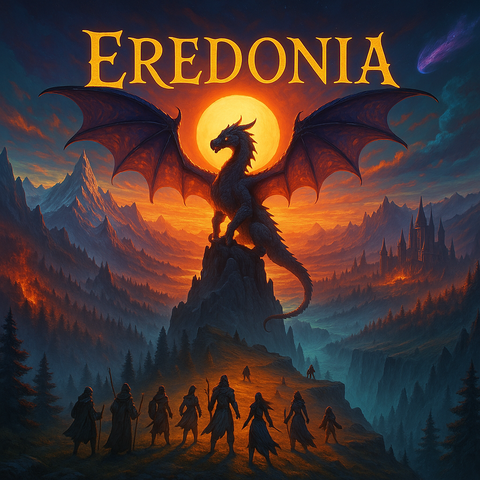
/src/w/32644/ukHViF6jNvAS11OOr5KUSaEXASyohjQ7q3MoQLmx.png)
/src/w/32644/ukHViF6jNvAS11OOr5KUSaEXASyohjQ7q3MoQLmx.png)
/src/w/32644/rWsPUZlOXtLI2flBCxgYBlBO7FBc99xQKy6T5keR.jpg)
/src/w/32644/rWsPUZlOXtLI2flBCxgYBlBO7FBc99xQKy6T5keR.jpg)

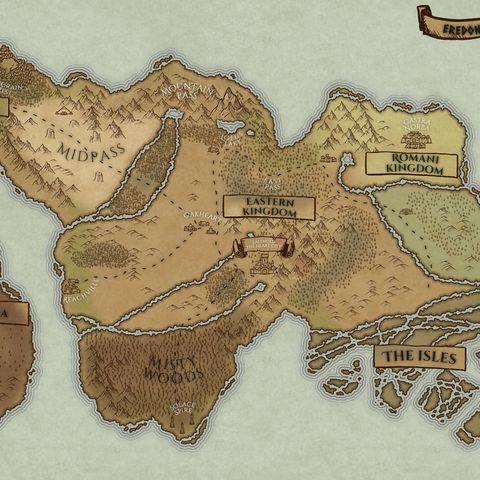

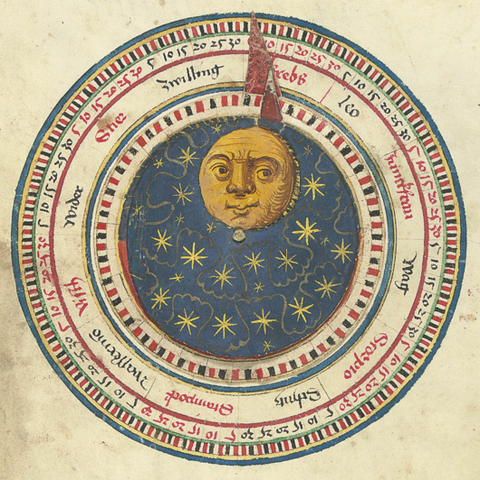

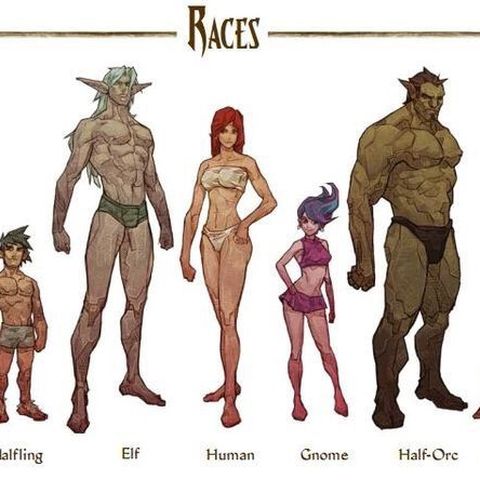


/src/w/32644/v8QCl250v0PBkaofchqZAfplb3hPkLlPxMShbAyj.webp)
/src/w/32644/v8QCl250v0PBkaofchqZAfplb3hPkLlPxMShbAyj.webp)
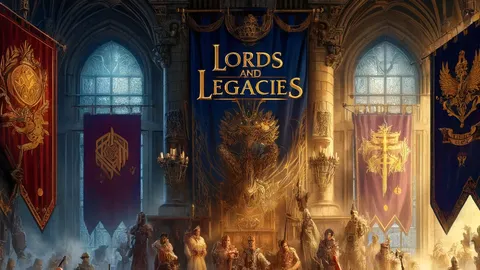





/src/w/32644/AYcFM40Zlt2xIZVVlTtwnA2L4mzy5JPDcMSFkwlk.webp)
/src/w/32644/AYcFM40Zlt2xIZVVlTtwnA2L4mzy5JPDcMSFkwlk.webp)

